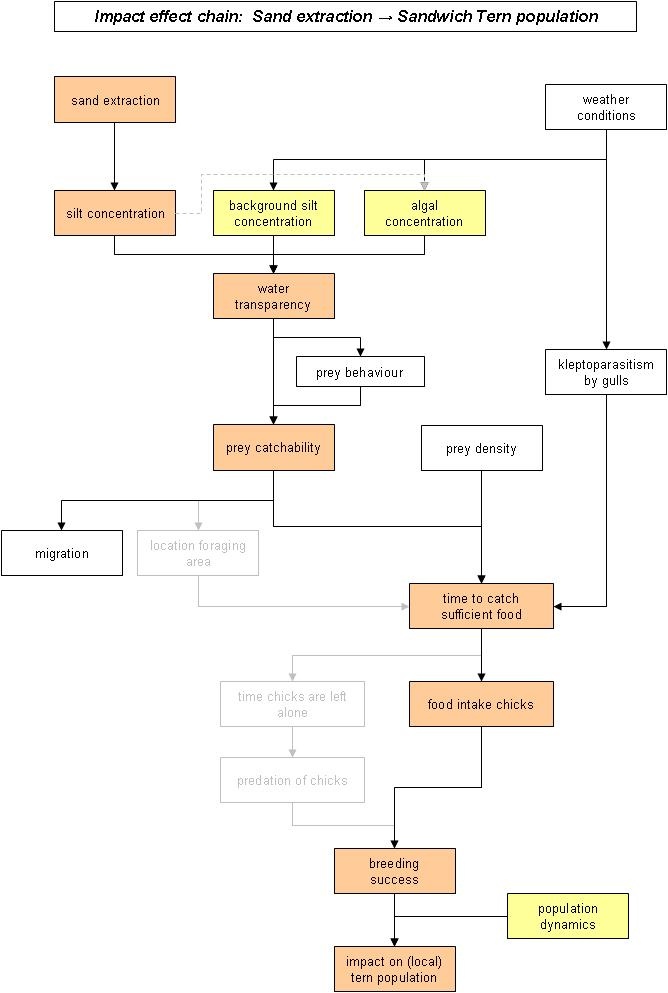Probabilistic Approach – Cause effect chain
This section describes a probabilistic approach to the quantitative modelling of the potential effects of sand mining on tern populations. The method described herein is mainly applicable in the planning and design phases of a dredging project.
In order to model the impact of dredging activities on Sandwich Tern populations, a literature search was carried out to find out how dredging could affect these populations. This literature search led to the cause-effect chain, in which the relations that are expected to influence the population size are visualised.

In short, the cause effect chain starts from an increase of fine sediment concentrations caused by dredging, which leads to an effect on the population size through a decrease in breeding success. The main steps involved leading to this reduction are:
- sand extraction by dredging activities causes an increase of the silt concentration in the water column,
- the increase of the silt concentration causes an increase in turbidity of the water,
- the increase in turbidity reduces the catchability of fish by terns,
- the reduced catchability leads to an increase in time needed to catch enough food,
- if the available time is a limiting factor, the amount of food brought to the chicks is reduced,
- if food intake of the chicks is reduced, the breeding success of the terns decreases.
Van Kruchten & van der Hammen (2011) explain the steps in the cause-effect chain in more detail.
